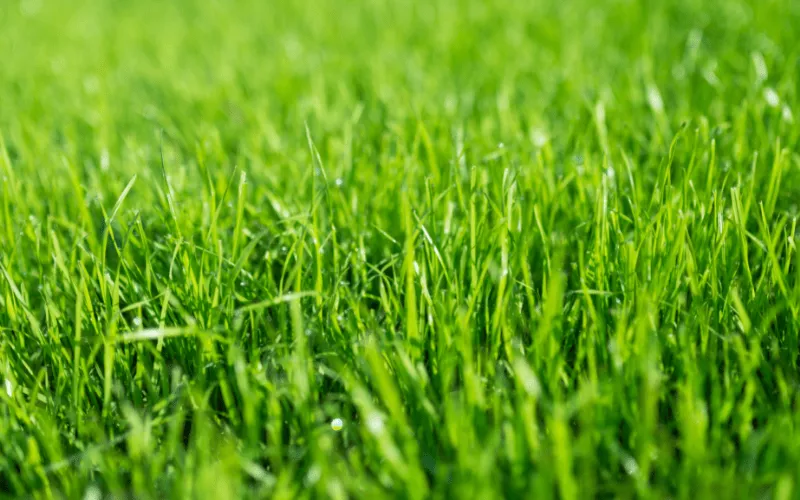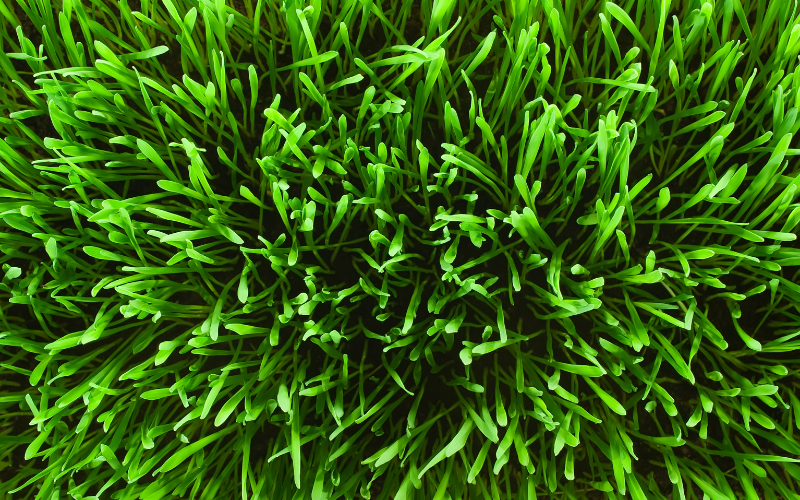The scientific names for grass are important to know because the common name may differ depending on the area you live in. If you just use the common name, people in different parts of the country may not know what you are talking about. However, the scientific name stays the same regardless of location.

Types of Lawn Grass and Their Scientific Names
The list below represents most of the turfgrass species used for lawns in the United States. It certainly contains the common turfgrasses. Each grass is described a bit so you can tell what it is used for.
Creeping bentgrass (Agrostis palustris)
Creeping bentgrass is a specialty grass used on golf courses, lawn bowling places, and grass tennis courts. It can take being cut to a low height but is not suited for home lawn use.
Colonial bentgrass (Agrostis tenuis)
This is a fine-textured grass with a dense habit and upright leaves. It grows best in cool, humid weather and is used for lawns. It tolerates some shade but takes a lot of water and gets diseases easily.
Perennial Ryegrass (Lolium perenne)
Perennial ryegrass is a cool-season grass that grows in clumps. The spaces between the clumps will need reseeding to fill in. It will tolerate some shade. This grass is aggressive, rapidly growing, and forms a uniform lawn. It chokes out weeds easily.
Kentucky Bluegrass (Poa pratensis)
Kentucky Bluegrass is a legendary grass that has blue-green leaves and a dense habit. It spreads by rhizomes and does most of its growing in the fall, winter, and early spring. This grass needs lots of water in the summer to keep the shallow roots wet.
Tall Fescue (Festuca arundinacea)
Tall Fescue is a coarse grass that clumps. Open areas will need to be reseeded. However, it grows vigorously and chokes out weeds. This grass tolerates part shade.
Fine Fescues
When you hear grass referred to as fine fescue, it usually refers to one of the cultivars below. Fine fescues have a fine texture due to a narrow grass blade and tolerate part shade. They form a medium green to dark green dense turf that is wear-resistant.
- Creeping Red Fescue (Festuca rubra)
- Chewings Fescue (Festuca rubra var. Commutata)
- Hard Fescue (Festuca longifolia)
- Sheep Fescue ( Festuca ovina)
Common Bermudagrass (Cynodon dactylon)
Common Bermudagrass is gray-green when growing, but loses its color in the winter. It is a warm-season grass that spreads through stolons and rhizomes. It is a medium-coarse grass that spread aggressively. It develops thatch so must be dethatched yearly. It tolerates some heavy traffic.
Hybrid Bermudagrass (Cynodon spp.)
Hybrid Bermudagrass includes cultivars such as Tifgreen, Tifway II, and Santa Ana. These grasses are competitive, drought-tolerant, and blue-green. They tolerate heavy traffic. They develop thatch so should be dethatched yearly.
St. Augustine grass (Stenotaphrum secundatum)
St. Augustine is the best adapted to part shade of the warm season grasses. It is creeping grass that is a medium green color. It will form a dense mat to choke out weeds but must be dethatched yearly. This grass is very salt tolerant.
Zoysia grass (Zoysia japonica)
Zoysia grass is light to medium green with a medium to fine texture. It prefers sun but will tolerate part shade. This grass grows slowly but will eventually form a dense mat. It must be dethatched yearly.
Buffalo grass (Bouteloua dactyloides)
Buffalo grass is a warm-season grass that does best with low maintenance and low use. This grass is unique in that it has male and female flowers. It must be planted in the sun but is drought tolerant.
Centipede grass (Eremochloa ophiuroides)
Centipede grass does well in acid soil. It is a warm-season grass and is low maintenance. It does not do well in the shade and is sensitive to many common herbicides. This grass does not tolerate a lot of traffic.
Bahiagrass (Paspalum notatum)
Bahiagrass is not a great turfgrass. It is light in color, coarse in texture, and does not form a dense canopy. It is used where erosion control is more important than looks. It spreads rapidly and is very aggressive, choking weeds out.
Carpetgrass (Axonopus)
Carpetgrass are a cluster of grasses that look a lot like centipede grass. They are medium green, coarse, and slow-growing. However, they tolerate part shady, wet, acidic soils that other turfgrasses won’t grow in.
Rough bluegrass (Poa trivialis)
Rough bluegrass is highly shade tolerant but doesn’t do well in the hot sun in the summer. It is a lighter green than Kentucky bluegrass. It prefers moist soil.

Summary of Common Grasses and Their Scientific Names
Here are the grasses presented in alphabetical order along with their scientific names.
| Grass Common Name | Grass Scientific Name |
|---|---|
| Bahia grass | Paspalum notatum |
| Buffalo grass | Bouteloua dactyloides |
| Carpet grass | Axonopus |
| Centipede grass | Eremochloa ophiuroides |
| Chewings Fescue | Festuca rubra var. Commutata |
| Colonial bentgrass | Agrostis tenuis |
| Common Bermudagrass | Cynodon dactylon |
| Creeping Red Fescue | Festuca rubra |
| Creeping bentgrass | Agrostis palustris |
| Hard Fescue | Festuca longifolia |
| Hybrid Bermudagrass | Cynodon spp. |
| Kentucky Bluegrass | Poa pratensis |
| Perennial Ryegrass | Lolium perenne |
| Rough bluegrass | Poa trivialis |
| Sheep Fescue | Festuca ovina |
| St. Augustine grass | Stenotaphrum secundatum |
| Tall Fescue | Festuca arundinacea |
| Zoysia grass | Zoysia japonica |
It can be frustrating to order a plant or some seed over the internet or on the phone and get something very different from what you thought you were ordering. Using the scientific name for grasses will ensure that you receive the grass you think you ordered, even if it has a different common name in your region than most people use.


Hey do you run a business providing all these grass seeds?
Hi Timbo,
Thanks for your comment. No, I do not sell grass seed.
I’m just a big fan of lawn care and like to share my knowledge and experience in the hope that it might help a few folks out.
Take care, Tom.